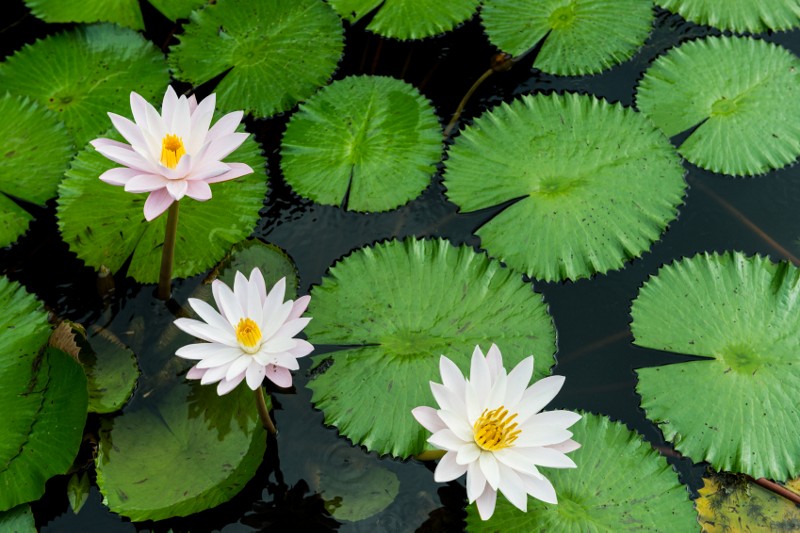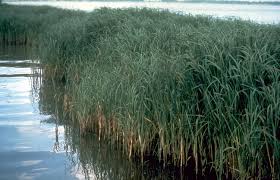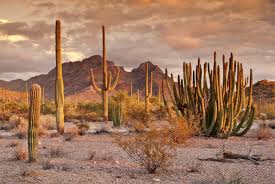Overview
Some types of plants grow successfully in unusual regions, including aquatic plants, salt-tolerant plants, and desert plants. A few types of plants gather nutrients from trapped insects.
Aquatic Plants
While most plants live on land, some live in water for most of their life cycle. The roots are often submerged in mud, and parts of the plants may have large open spaces that are filled with air, to bring needed oxygen down to the roots. For example, water lilies have spongy tissue in their stems and leaves that bring oxygen down to their roots, and their flowers grow above the water surface. Mangrove trees that grow in shallow water have similar spongy roots, and cypress trees have specialized structures that grow above the water. Plants that grow in wetlands are important to the ecosystem and the overall health of the diverse species that live in the area.
Salt-Tolerant Plants
While most plants cannot live in saline environments, a few types of plants can live in areas of high salt concentrations that would destroy most others. Some of these high concentrations are in salt marshes near seawater. The roots of those plants, such as salt marsh grasses, take in much more salt than is useful. The excess salt is pumped away by cells in the leaves, where it can be washed away by rain, so the proper balance of salt is maintained in the plant itself.
Desert Plants
Desert plants live in areas where there is infrequent rainfall. Large cactus plants have branching roots that cover a large area and grow rapidly to absorb whatever rainfall there is. Thick stems are often covered with a waxy substance and store water between rainfall periods. The stems actually carry out photosynthesis. Small, spiny leaves minimize water loss from evaporation during the hot, dry days.
Carnivorous Plants
Carnivorous plants get nutrients from other sources than the soil. Carnivorous plants such as the Venus flytrap, pitcher plants, and sundew live in soils that are low in nitrogen and calcium, which they digest from the insects they trap. The Venus flytrap has leaves that are hinged in the middle that close suddenly if an insect touches sensitive hairs on them. The trapped insect is digested within those leaves. Similarly, pitcher plants attract insects that fall into curled leaves. At the bottom of the waxy pitcher, trapped insects are digested by enzymes. Sundew trap insects by sticky mucus on their leaves.
Interested in science tutoring services? Learn more about how we are assisting thousands of students each academic year.
SchoolTutoring Academy is the premier educational services company for K-12 and college students. We offer tutoring programs for students in K-12, AP classes, and college. To learn more about how we help parents and students in Gulfport, MS visit: Tutoring in Gulfport, MS




